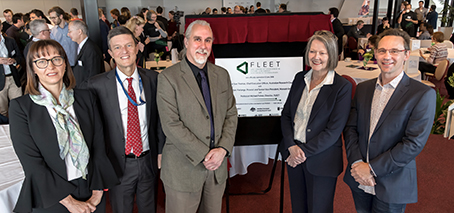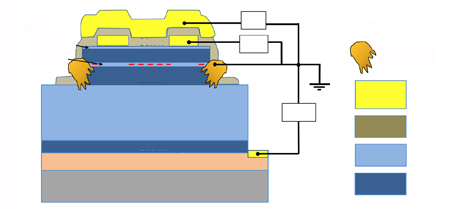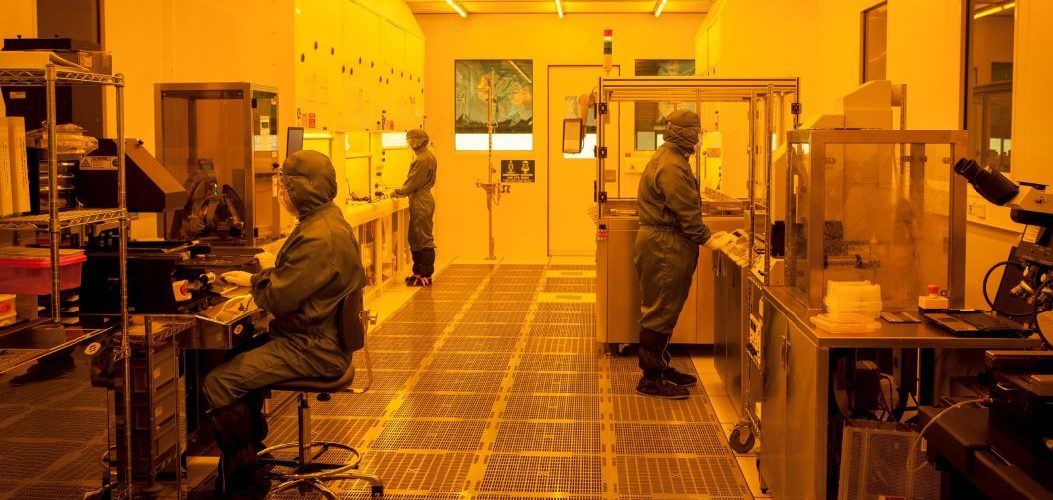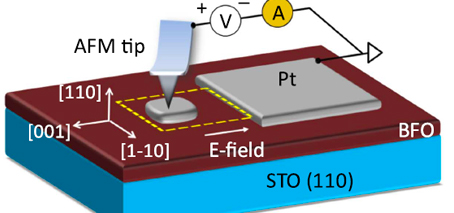Official launch: Australian Research Council Centre of Excellence in Future Low-Energy Electronics Technologies 12 June 2018, 11 AM New Horizons Building, Monash University, Clayton We have an insatiable appetite for computing. But our ongoing need for computation is burning more than 5 percent of global electricity. And that figure is expected to double each decade. A new Australian Research Council …
FLEET postdoc: Fulbright Scholarship to fund superconductivity research at Harvard
Congratulations to FLEET UNSW postdoc Harley Scammell who has been awarded a Fulbright Scholarship to work with world-renowned theoretical physicist Subir Sachdev at Harvard University on the mechanisms behind superconductivity – an exotic quantum phase of matter. The Australian-American Fulbright Commission promotes education and cultural exchange between Australia and the US, By the completion of the Fulbright program, researchers around …
Micro branding: creating microscale and nanoscale FLEET banners
FLEET researchers taking an innovative, even ‘playful’, approach to their science have created a couple of unique and interesting branding displays for the Centre. >>>FLEET PhD student Fan Ji developed this micro-sized logo (right) at UNSW. The FLEET logo is etched onto the two-dimensional interface between two materials, in letters only a few thousandths of a millimetre high, using bias-assisted …
UNSW: Mesoscopic devices in oxide heterostructure based 2D electron systems
Supervisor: A/Prof. Alex Hamilton The conducting interface between the two insulating oxides LaAlO3 and SrTiO3 (LAO/STO) exhibits many intriguing properties such as high mobility, a gate-tunable superconducting phase, ferroelectricity and ferromagnetism. The aim of this project, working in in close collaboration with FLEET colleagues in Materials science at UNSW, is to develop new techniques for fabricating nanoscale devices at the …
PhD Project: Quantum transport in hybrid semiconductor-superconductor devices
Supervisor: A/Prof. Alex Hamilton Topological materials, such as topological insulators, Weyl semimetals, and strongly spin-orbit coupled semiconductors, have attracted considerable attention due to their potential in spin electronics and quantum computation.A recent development are hybrid superconductor-semiconductor systems, which can support zero energy Majorana modes. In this project we will fabricate devices superconductor-semiconductor and superconductor-2D devices using electron beam lithography, and …
FLEET researchers get a $4.6m boost in ARC funding round
This month’s ARC funding round saw FLEET research and researchers across five universities awarded additional funding. Across eight separate grants, almost $4.6m new research funding went to projects and facilities led by or involving FLEET researchers or directly contributing to FLEET’s search to develop ultra-low energy electronics and boost related areas of research. Two projects in particular will be key …
Research in Topological Materials
FLEET researchers undertake various research projects in the area of Topological Materials. If you have a project that would fit this theme, find information about a potential supervisor here: PROF. MICHAEL FUHRER Experiments on electronic devices made from novel two-dimensional materials such as graphene, layered transition metal dichalcogenides, topological insulators. Scanning tunnelling microscopy. Surface science A/PROF. NIKHIL MEDHEKAR Computational mechanics …
Current-carrying holes confined to one-dimension show unique spin in UNSW study
UNSW researchers solve a 10-year-old mystery in the way nanoscale transistors work. Half of all the transistors in your iPhone use positively-charged ‘holes’, rather than negatively-charged electrons to operate. At university, we teach undergraduates that holes are quasiparticles, basically ‘missing electrons’ – a bit like the bubble in a spirit level, or the missing chair in a game of musical …
PhD Application Information – UNSW
Application Apply by 2 February. Eligibility Before you can apply for your research higher degree program, it is critical that you determine whether you are eligible for admission. To determine your eligibility, you must use the UNSW HDR Self-Assessment Tool. The Self-Assessment Tool provides you with an indication of your eligibility for admission to the UNSW research higher degree programs, …
Materials one atom thick & nanotransistors: FLEET features in nano edition
FLEET features in this month’s annual ‘nano’ edition of the Australian Manufacturing Tech magazine. The article looks at growth of atomically thin and other novel materials and nanofabrication, with a particular focus on partnerships. Atomically thin material projects presented include semiconductor fabrication at RMIT University (Lan Wang) and the University of Wollongong (Xiaoliang Wang) and molecular beam epitaxy (Mark Edmonds …
‘Agile’ circuits: new study a step towards ferroelectric domain wall nanoelectronics
A UNSW study published last Friday presents an exciting step towards a novel form of electronics based on nano-scale, ‘disappearing’ conduction paths that could allow for extremely dense memory storage. It’s based on domain walls, which are atomically sharp topological defects separating regions of uniform polarisation in ferroelectric materials. The domain walls are electrically conductive, while the surrounding of the wall …
New spin-orbit coupling analysis agrees with experiment
A study by FLEET’s UNSW researchers looked at spin-orbit interaction at the two-dimensional interface between common semiconductor materials. A new semi-analytical method was developed for analysis. Spin-orbit interaction (SOI), is the interplay between electrons’ inherent angular momentum (their quantum spin) and their orbit around an atom’s nucleus. This interaction is key to the function of topological materials, which are studied …

